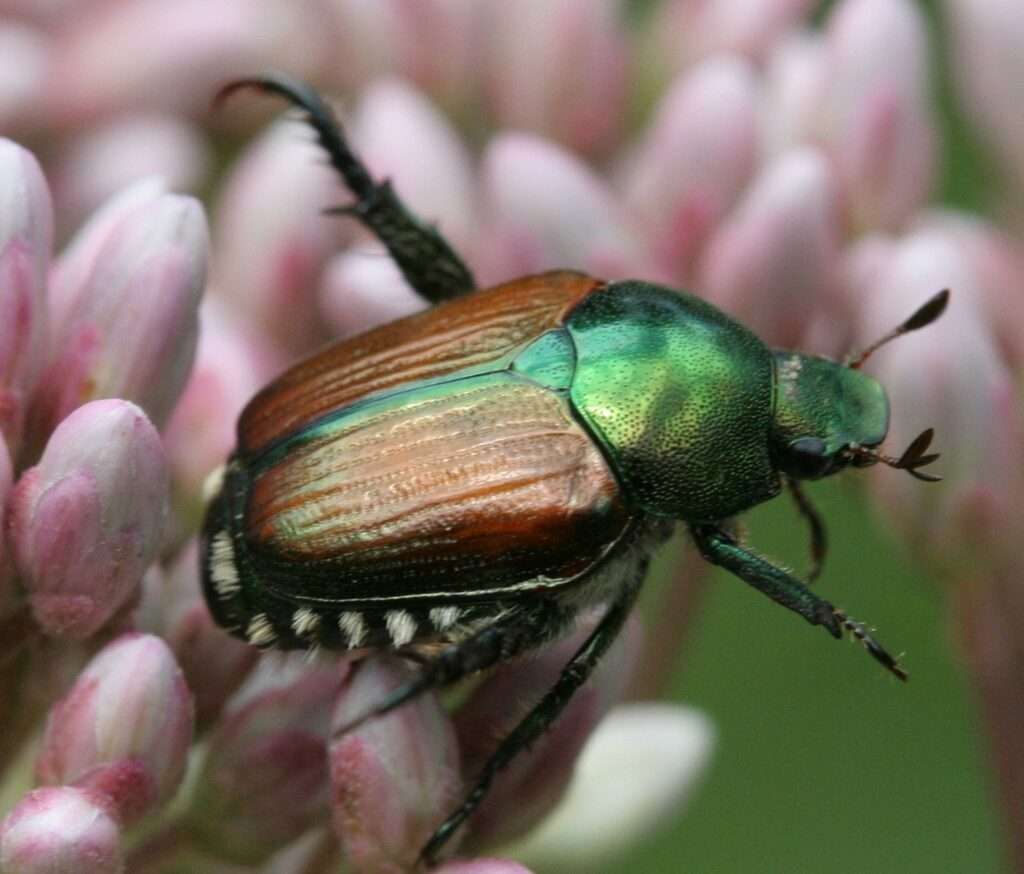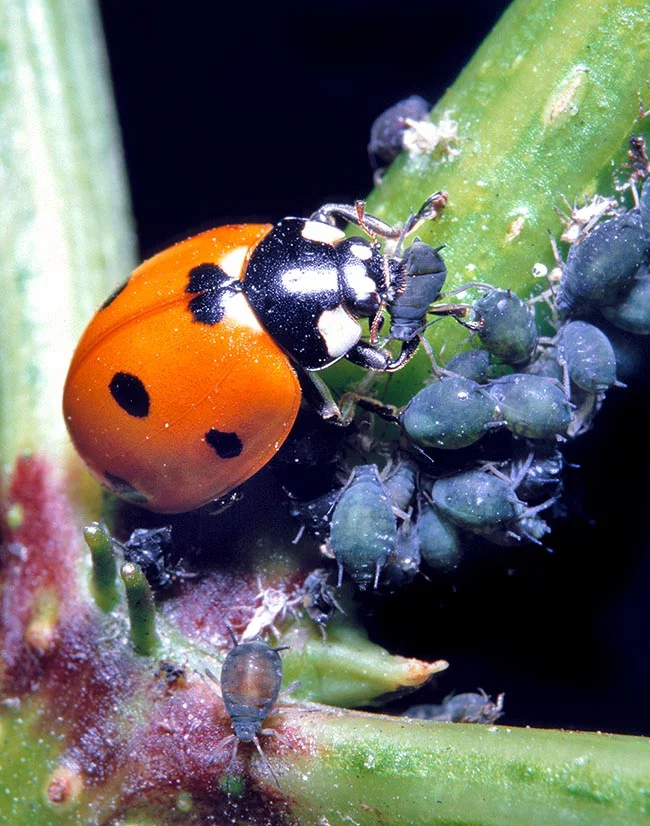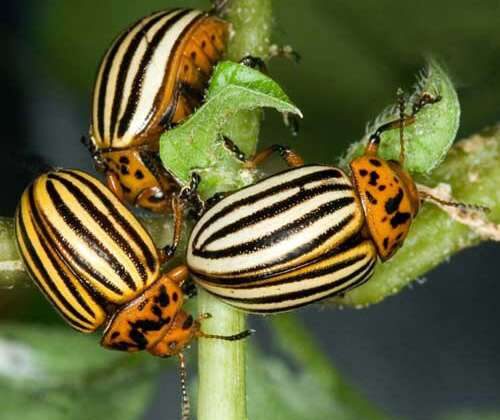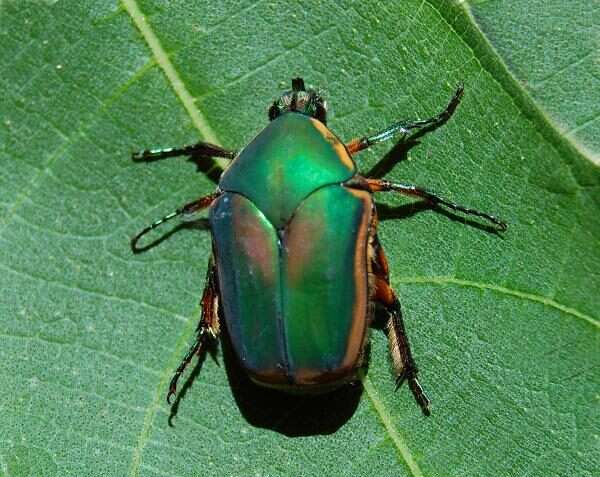
A type of scarab beetle is called the Japanese beetle (Popillia japonica). The adult features a green thorax iridescent, a head and copper-colored elytra that is 15 mm (0.6 in) long by 10 mm (0.4 in) wide. It is a notable pest to over 300 species of plants in certain parts of Europe and North America, including rose bushes, grapes, hops, canna, crape myrtles, birch trees, linden trees, and others. In Japan, where natural predators manage it, it is not particularly harmful. In addition, occasionally, adult beetles harm plants by skeletonizing the leaves as feeding on a plant’s fruit. The larvae that live underground eat the roots of grasses.
Identification of the Japanese Beetle
- The most distinctive characteristic of the japanese beetle is its exoskeleton, which contrasts a vivid green with a brilliant copper color.
- Their rigid exoskeleton, which normally ranges in thickness from 10 to 12 mm, hides powerful wings under bronze wing covers.
- The longest Japanese beetles, however, can grow to be 15 mm long. When not in use, the wings are hidden by wing covers with their own name: elyptra.
Geographical Location
East Asian native Japanese beetles were unintentionally brought into the United States in 1916. They can be found in North America, to Ontario in the north, and to Nova Scotia in the east, with some populations now in California.
Habitat
It appears that Japanese beetles can survive anywhere there is enough greenery for them to eat. They frequently reside on farms, in cities, and even in your garden; they are not just found in grasslands or forests.
Feeding
It is well known that Japanese beetles eat a range of shrubs, trees, nursery plants and grasses. The adults consume the fruit, leaves and flowers of plants like grapes, peaches, roses, cherries, soybeans, hibiscus, Indian mallow, dahlias, zinnias, horse chestnuts, willow, elder, and sassafras.

Reproduction
The life cycle of the Japanese beetle lasts for one whole year. The adult beetles emerge from the pupal stage in the middle of the summer. The beetles fly and gather on host plants on warm days to eat and, more importantly, mate. The females lay one to four eggs in loose, damp soil that afternoon after mating. The female beetle will lay between 40 and 60 eggs during her lifetime. The larvae appear two weeks after the eggs were laid. They remain active until winter, at which point they “hibernate” beneath the soil surface, feeding on the thin roots of grass-like plants. The larvae resume feeding by moving closer to the surface when the soil heats up once again in the spring. The grubs remain inactive soon after that for a 10-day period until pupation begins. The adults emerge after the pupal stage lasts for 8 to 20 days, then
Importance in Humans Life
Negative Role
These beetles are pests of horticulture and agriculture particularly in North America.
Why do they not keep them as pets?
Japanese beetles should never be kept as pets. They are typically found in swarms and have a 15-minute kill time for peach trees. The Japanese beetles have stripped the trees of all their fruits, blossoms, and foliage, leaving them looking barren. Only the veins are left after the Japanese beetles have consumed the leaves.
Table





